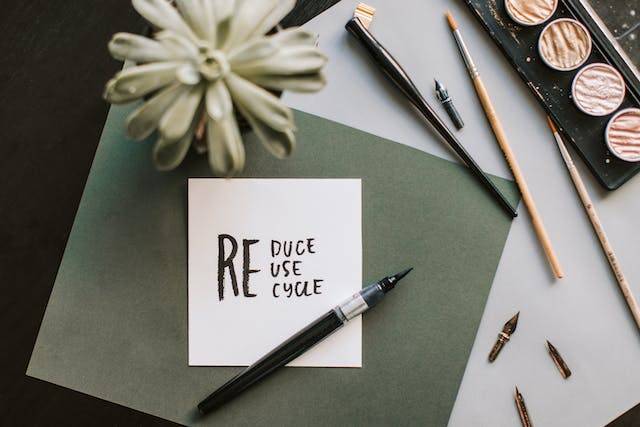
Developing a low-waste moving plan stands out as an essential step in creating a sustainable future. It incorporates the use of reusable materials in relocation, significantly diminishing the environmental impact of the moving process. That emerges as a crucial solution, addressing the escalating concern for environmental preservation. After all, as we strive for a greener planet, adopting practices that minimize waste is vital.
Tips for Reducing Waste and Embracing Reusable Materials in Relocation

Excessive waste significantly affects the environment, and the relocation process contributes immensely to this issue. During moves, people often use an extensive amount of packing materials, many of which end up in landfills, contributing to the increasing problem of waste. In truth, statistics indicate that an average household relocation contributes to a substantial amount of waste, highlighting the urgent need for a shift in practices. If we do not address this issue promptly, we risk causing long-lasting damage to our ecosystems and biodiversity.
This impact extends beyond the immediate surroundings, affecting global environmental health.
The ability to recycle and reuse your trash becomes a pivotal aspect of this sustainable transition, emphasizing waste reduction and resource optimization. In taking these steps, individuals contribute to a broader movement towards sustainability, making a positive impact with each move they undertake.
Benefits of Embracing Reusable Materials
Opting for reusable materials in relocation offers numerous benefits, both from an environmental and economic standpoint. Utilizing durable, reusable packing materials reduces waste production, contributing to overall environmental preservation.
At the same time, these reusable options often prove more cost-effective than disposable alternatives. This cost-effectiveness, combined with their positive environmental impact, makes reusable materials an appealing choice for those undergoing relocation.
Besides the financial and environmental advantages, reusable materials also enhance the efficiency and organization of the moving process, making the experience smoother. Choosing reusable materials for relocation is a significant step toward sustainability, reflecting a collective responsibility to protect our planet and contribute to a global sustainability movement.

Practical Tips for Reducing Waste During Relocation
Planning and Organization
A room-by-room packing plan or the pack one area at a time approach significantly enhances waste reduction efforts during relocation. This strategy allows for a more organized and systematic use of reusable materials, ensuring that each space is adequately addressed. A thorough checklist detailing the necessary materials and steps for each room becomes an invaluable tool in this process. It guides the packing, ensuring that no items are missed and that reusable materials are utilized efficiently. As a result, the relocation process becomes smoother, waste is minimized, and the overall efficiency of the move is improved.
Sourcing Reusable Materials
Finding reusable packing materials, such as boxes, bubble wrap, and padding, is a crucial step in waste reduction. Local communities and resources can serve as valuable sources for these materials, often offering them at little to no cost. Engaging with these communities aids in acquiring the necessary materials and fosters a sense of communal responsibility toward sustainable practices.

Packing Strategies
Employing best practices when packing with reusable materials ensures the safety and security of belongings. It involves careful planning and execution, using appropriate materials for different items. This attention to detail not only protects possessions but also contributes to the move’s efficiency, ensuring that everything arrives at the destination in the same condition it left.
Unpacking and Reusing/Recycling Materials
Developing strategies for efficient unpacking is crucial, as is considering options for reusing or recycling materials post-relocation. These practices contribute to a closed-loop system, ensuring that the materials used in the relocation process find new purposes or are properly recycled. This approach aligns with sustainable practices, promoting a circular economy and reducing waste.
Overcoming Challenges and Common Misconceptions
Reducing waste and embracing reusable materials during relocation is commendable yet challenging. One major hurdle is using single-use packaging materials, such as cardboard boxes and bubble wrap. Overcoming this requires a shift in mindset and practices. Individuals and companies can invest in durable, reusable containers and packing materials. Educating all parties involved in the relocation process about the importance of sustainable practices and providing them with reusable options can significantly mitigate waste.
However, the initial cost and availability of reusable materials can be a deterrent. To overcome this, one can seek rental options for reusable packing containers or source second-hand materials from local communities or online platforms. Engaging in a circular economy, where materials are borrowed, used, and returned, can also be a viable solution. At the same time, companies specializing in sustainable relocation services are emerging, offering eco-friendly options and advice on minimizing waste.
Beyond Relocation: Adopting Sustainable Practices in Everyday Life
Encouraging the adoption of reusable materials and minimizing food waste during relocation is vital in fostering sustainable practices. Integrating these eco-friendly options, individuals demonstrate a commitment to environmental stewardship, contributing to a significant reduction in waste generation. This habit extends beyond the moving process, integrating seamlessly into daily life and amplifying its positive impact on the environment. As a result, adopting a sustainable lifestyle ensures a healthier planet for future generations and promotes a culture of responsible living.
Final Words
The significance of minimizing waste by adopting reusable materials in relocation cannot be overstated. The array of benefits, from cost savings to environmental preservation, highlights the critical role that reusable materials play in creating sustainable relocation practices. It’s now the responsibility of each individual to take conscious steps towards integrating these materials into their moving process.


